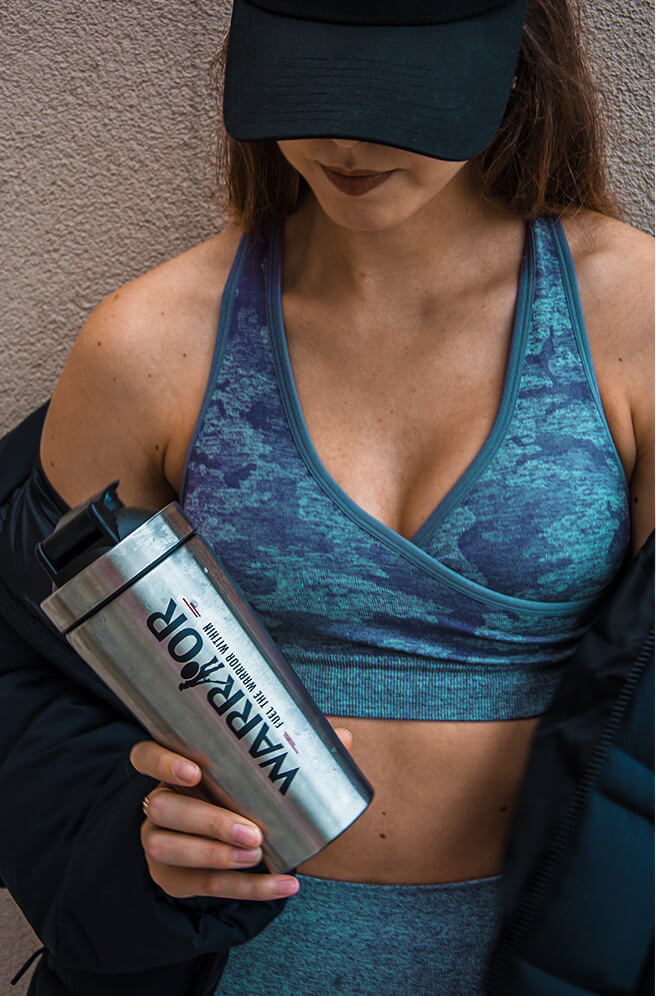How can probiotics boost your workout?

Many of us do not recognize this, but the intestinal microflora is important not only for our digestion, but for overall health. In medical schools, the intestinal mucosa is referred to as the "gateway against infection." In other words, if it is damaged, the consequences of spreading the infection throughout the body are very serious, in many cases fatal. It is therefore necessary to take good care of the intestines, both from the outside and from the inside. And we do not mean intestinal showers and similar products of the human mind, which bring more harm than good. This article will be devoted to a proven issue, specifically probiotics, the positive effect of which will be appreciated by anyone, regardless of age and lifestyle.
There are about 400 species of bacteria in the large intestine. Beneficial bacteria acidify the intestinal contents, prevent the formation of pathogens and the action of adverse bacteria, block the conversion of nitrates to nitrites and take part in the formation of some B-complex vitamins and vitamin K. The normal intestinal microflora is part of a defines mechanism designed to prevent pathogenic bacteria from adhering to the intestinal mucosa, forming compounds that kill harmful bacteria, and consuming the nutrients that bad bacteria need to grow. The microflora is also important in the digestion of fatty acids and in the removal of harmful substances from the body.
Probiotics are those bacteria that affect the composition of the microflora of the large intestine, and thus the human health - they have probiotic properties. All so far known bacteria with a probiotic effect belong to the group of so-called lactic acid bacteria. Some strains (Lactobacillus, Bifidobacterium, Enterococcus) are used for the needs of the food and pharmaceutical industry [1]. Colonization of the intestine by probiotic microorganisms is only temporary - their number gradually decreases during the days to weeks after their consumption. Probiotics must meet the criteria:
- they must not be pathogenic
- they must be strong enough not to be destroyed or weakened when passing through the digestive tract or technological processing
- they must remain viable throughout the shelf life of the food in question
- they must have ability to attach to intestinal epithelial cells and grow further
- they must have demonstrable positive effect on health
Probiotics improve the composition of the intestinal microflora, and thus can positively affect the functioning of the immune system [4, 5]:
- preventing or alleviating the course of diarrheal diseases and urinary tract infections
- reducing the risk of colon cancer (by reducing the number of harmful microbes that produce toxic substances)
- reducing the absorption of cholesterol, and thus its levels in the blood [6, 7]
- improving the absorption of minerals, especially calcium and magnesium (by increasing the production of acids and thus lowering the pH in the intestines)
- reducing the risk of cardiovascular disease, irritable bowel syndrome, Crohn's disease, ulcerative colitis, obesity or diabetes [2, 3]
- increasing lactose tolerance in people with lactose intolerance [4]
- reducing muscle damage and accelerating muscle regeneration [5]
Probiotic cultures are now commonly added to sour milk products, cheeses, fermented meat products, and even biscuit and wafer fillings. We can also find them in sauerkraut, kimchi (Korean food with fermented vegetables) or kombuche (tea mushroom).
In connection with probiotics, it is also essential to mention the terms prebiotics and symbiotics. Prebiotics are substances not digested in the small intestine, which serve as a nutrient for probiotic bacteria during the transition to the large intestine, and thus boost their growth. Moreover, they improve the absorption of minerals and thus bone density; increase insulin sensitivity; increase the feeling of satiety and reduce appetite; support balanced body weight values [8-12]. Prebiotics occur naturally, for example, in root vegetables, chia seeds, nuts, chicory or artichokes. In breast milk, prebiotics are the third most abundant component after lactose and fats. The best known prebiotics include inulin, oligofructose, galactooligosaccharides and lactulose. Symbiotics are a combination of probiotics and prebiotics, with the mutual effect of both components. An example of a symbiotic food is yogurt, which contains bifidobacteria and oligofructose [13].
If you are thinking about which probiotic nutritional supplement to choose, you have a wide range of options to choose from. The individual supplements differ both in the type and in the number of bacteria contained. The recommended daily dose is 2 - 20 grams of probiotics per day [1]. The final amount depends on how well your body is able to tolerate them. Remember that probiotics, like fibre, are indigestible in food. Too much a dose of probiotics can make you feel flatulent, so start with a low dose and increase it gradually.
SOURCES
Binns, N. (2013). Probiotics, Prebiotics and the Gut Microbia. Retrieved from http://www.ilsi.org/Europe/Publications/Prebiotics-Probiotics.pdf
Brestoff, J. R., & Artis, D. (2013). Commensal bacteria at the interface of host metabolism and the immune system. Nature Immunology, 14(7), 676-684.
Jäger, R., Shields, K., Sharp, M., Partl, J., Wilson, J. M., Lowery, R. P., ... & Purpura, M. (2015). Effects of probiotic supplementation on markers of skeletal muscle damage, perceived recovery and athletic performance after an intense single leg training bout. Journal of the International Society of Sports Nutrition, 12(Suppl 1), P36.
de Vrese, M., Stegelmann, A., Richter, B., Fenselau, S., Laue, C., & Schrezenmeir, J. (2001). Probiotics—compensation for lactase insufficiency. The American Journal of Clinical Nutrition, 73(2), 421s-429 p.
Abrams, S. A., Hawthorne, K. M., Aliu, O., Hicks, P. D., Chen, Z., & Griffin, I. J. (2007). An inulin-type fructan enhances calcium absorption primarily via an effect on colonic absorption in humans. The Journal of Nutrition, 137(10), 2208-2212.
Chu, H., & Mazmanian, S. K. (2013). Innate immune recognition of the microbiota promotes host-microbial symbiosis. Nature immunology, 14(7), 668-675.
Jones, M. L., Martoni, C. J., Parent, M., & Prakash, S. (2012). Cholesterol-lowering efficacy of a microencapsulated bile salt hydrolase-active Lactobacillus reuteri NCIMB 30242 yoghurt formulation in hypercholesterolaemic adults. British Journal of Nutrition, 107(10), 1505-1513.
Whisner, C. M., Martin, B. R., Schoterman, M. H., Nakatsu, C. H., McCabe, L. D., McCabe, G. P., ... & Weaver, C. M. (2013). Galacto-oligosaccharides increase calcium absorption and gut bifidobacteria in young girls: a double-blind cross-over trial. British Journal of Nutrition, 110(7), 1292-1303.
Vulevic, J., Juric, A., Tzortzis, G., & Gibson, G. R. (2013). A mixture of trans-galactooligosaccharides reduces markers of metabolic syndrome and modulates the fecal microbiota and immune function of overweight adults. The Journal of Nutrition, 143(3), 324-331.
Parnell, J. A., & Reimer, R. A. (2009). Weight loss during oligofructose supplementation is associated with decreased ghrelin and increased peptide YY in overweight and obese adults. The American Journal of Clinical Nutrition, 89(6), 1751-1759.
Cani, P. D., Lecourt, E., Dewulf, E. M., Sohet, F. M., Pachikian, B. D., Naslain, D., ... & Delzenne, N. M. (2009). Gut microbiota fermentation of prebiotics increases satietogenic and incretin gut peptide production with consequences for appetite sensation and glucose response after a meal. The American Journal of Clinical Nutrition, 90(5), 1236-1243.
Cani, P. D., Joly, E., Horsmans, Y., & Delzenne, N. M. (2006). Oligofructose promotes satiety in healthy human: a pilot study. European Journal of Clinical Nutrition, 60(5), 567-572.
Kokešová, A. (2009). Imunomodulační účinky probiotik v klinické praxi. Pediatrie pro praxi, 10(3), 169-174.



